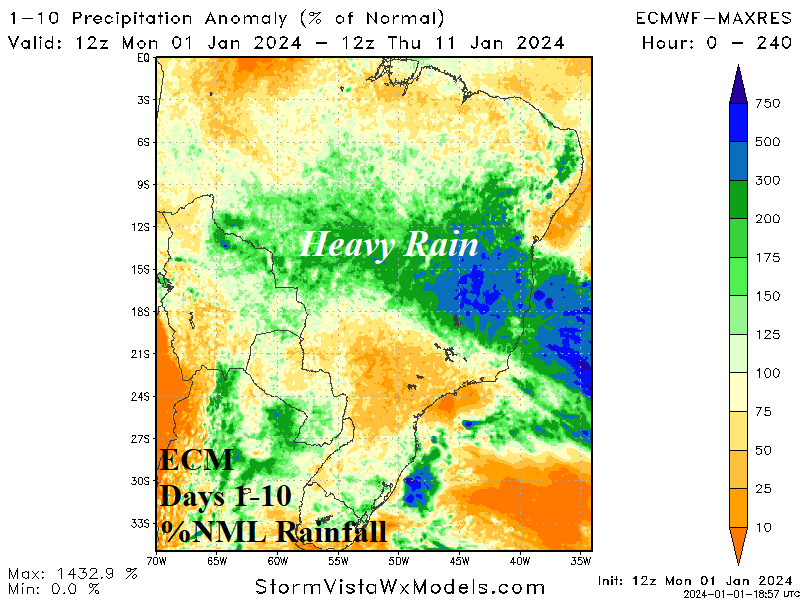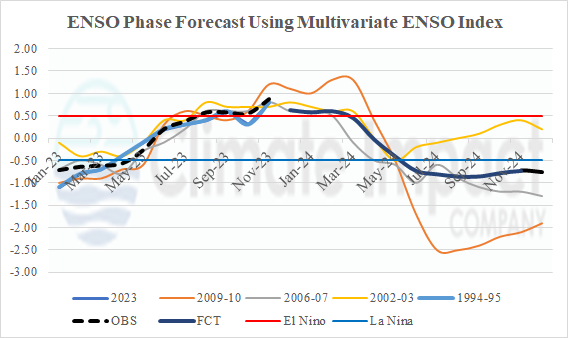
What A Rapidly Decelerating El Nino Brings To Major Crop Areas During MAR/APR/MAY and JUN/JUL/AUG 2024
12/26/2023, 2:49 pm EST
Warning…ECM Indicates Bitter Cold in 10 Days!
01/03/2024, 5:14 am EST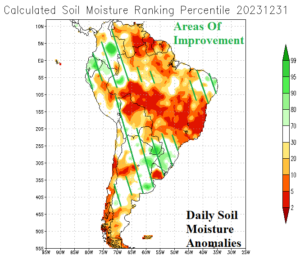
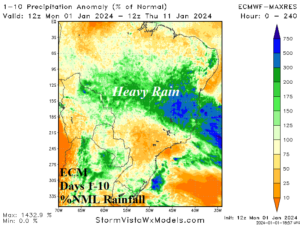
Fig. 1-2: Daily South America soil moisture anomalies and the 10-day percent of normal rainfall outlook.
South America discussion: During December, soil moisture conditions improved across Argentina to Southeast Brazil, far Western Brazil, and Northeast Brazil (Fig. 1). Drought remained intact across Central and Eastern Brazil. The 10-day outlook indicates heavy rain exactly where the need is highest from Central to East Coastal Brazil (Fig. 2). A weak upper-level low pressure area is the catalyst. Mid-month forecasts are dry and hot again for Central Brazil.
Australia discussion: Early meteorological summer featured very hot and dry climate across North-central/Northwest Australia where developing drought accelerated. In the East, periodic heavy rain showers were observed with hotter than normal temperatures and high humidity (Fig. 3). The 15-day outlook maintains a weak upper trough causing additional heavy rains in East (and South) Australia while hot and dry weather persists across western areas (Fig. 4). The wet bias across Eastern Australia is likely to last through January.
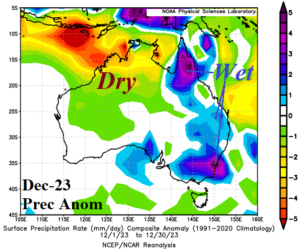

Fig. 3-4: Precipitation anomalies across Australia during December 2023 and the 15-day rainfall anomaly outlook.
Europe/Russia discussion: During early December, a stratospheric warming event caused the evolution of frigid arctic air across Northern Eurasia. Moderation followed although Northwest Eurasia was bitterly cold during December (Fig. 5). Another stratospheric warming event is underway, and the 15-day outlook indicates another round of frigid arctic air most concentrated on Northwest Eurasia (Fig. 6).


Fig. 5-6: December 2023 temperature anomalies across Europe and Western Russia and the 15-day temperature anomaly outlook.
![Climate-Impact-Company-logo-sm[1]](https://climateimpactcompany.com/wp-content/uploads/2023/08/Climate-Impact-Company-logo-sm1.png)
